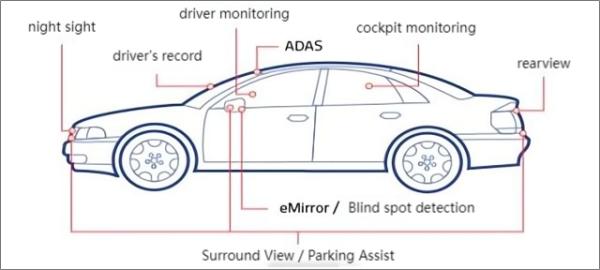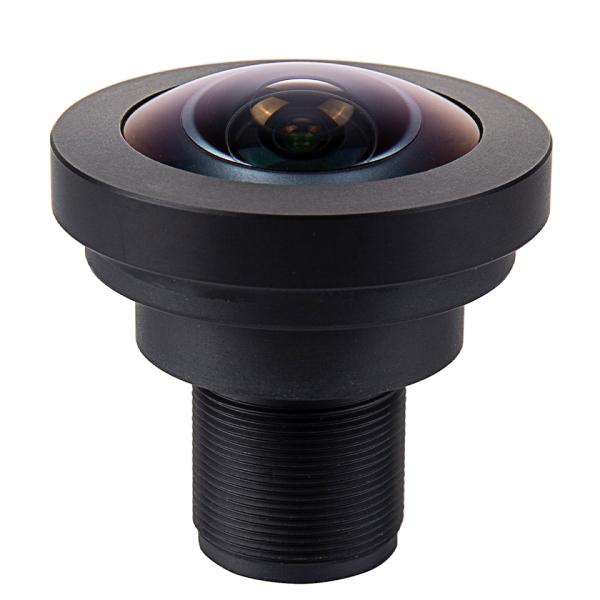Automotive lenses are widely used in the automotive field, starting from driving records and reversing images and gradually extending to ADAS assisted driving, and the application scenarios are becoming more and more abundant.
For people who drive cars, automotive lenses are like another pair of “eyes” for people, which can help the driver provide auxiliary perspectives, record the driving process, provide safety protection, etc., and are very important driving equipment.
Structural design principles of automotive lenses
The structural design principles of automotive lenses mainly involve optical, mechanical design, and image sensor aspects:
Optical design
Automotive lenses need to achieve a large viewing angle range and clear image quality in a limited space. Automotive lenses use an optical lens system, including convex lenses, concave lenses, filters and other components.
The optical design is based on optical principles, including the determination of the number of lenses, radius of curvature, lens combination, aperture size and other parameters to ensure better imaging results.
Automotive lens design arrangement
Image sensor selection
The image sensor of the automotive lens is a component that converts the optical signal into an electrical signal, which is one of the important factors affecting the imaging quality.
According to the specific needs, different types of sensors can be selected, such as CMOS or CCD sensors, which can capture image information according to the intensity of light and color changes, with high resolution, low noise, wide dynamic range and other characteristics, to meet the imaging requirements of complex scenes in vehicle driving.
Mechanical design
The mechanical design of the vehicle lens mainly considers the installation method, size restrictions, focusing mechanism, etc. In response to the needs of different models and installation locations, designers need to consider the shape, weight, shock-proof and other characteristics of the lens module to ensure that it can be firmly installed on the vehicle and can work normally under various environmental conditions.
Application direction of automotive lenses
We know that automotive lenses are widely used today. In summary, its application directions mainly include the following:
Driving record
Driving recording was one of the main early applications of in-car lenses. Automotive lenses can record accidents or other unexpected events that occur while driving and provide video data as evidence. Its ability to capture footage of the vehicle’s surroundings can provide important support for insurance claims in the event of an accident.
Navigation assistance
The in-car camera is used in conjunction with the navigation system to provide features such as real-time traffic information and lane assistance. It can identify road signs, lane lines, etc., help drivers navigate more accurately, avoid straying onto the wrong road, and provide early warnings and instructions.
The automotive lens
Security monitoring
Automotive lenses can monitor the dynamics of pedestrians, traffic lights and other vehicles around the vehicle, helping drivers to detect potential dangers in advance and take appropriate measures. In addition, the on-board camera can also detect violations such as fatigue driving and illegal parking, and remind drivers to abide by traffic rules.
Vehicle management
Automotive lenses can record vehicle usage and maintenance history, and detect vehicle faults and abnormalities. For fleet managers or companies with a large number of vehicles, the use of vehicle-mounted cameras can help uniformly monitor the status of vehicles and improve service quality and safety.
Driving behavior analysis
Automotive lenses can assess driving habits and potential risks by analyzing driver behavior, such as speeding, frequent lane changes, sudden braking, etc. For drivers, this is a good reminder and supervision mechanism, which promotes safe driving to a certain extent.
Final Thoughts:
If you are interested in purchasing various types of lenses for surveillance, scanning, drones, smart home, or any other use, we have what you need. Contact us today to learn more about our lenses and other accessories.
Post time: Aug-30-2024





